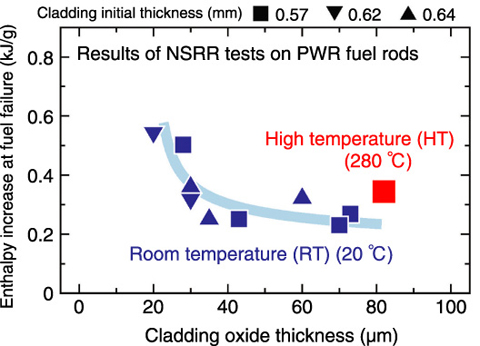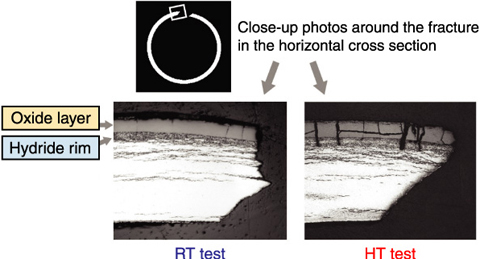
Fig.6-2 Relation between fuel enthalpy increase at failure and cladding oxide thickness

Fig.6-3 High burnup PWR fuel cladding that failed in the room temperature and high temperature tests at NSRR
To confirm the safety design of a reactor, safety reviews are performed under various accident conditions as well as under normal operation conditions. One of the hypothesized accidents is the reactivity initiated accident (RIA), which is a power excursion typically caused by control rod ejection. The safety review needs criteria to judge fuel failure in RIAs. The current Japanese criteria for fuel failure are based on the results of RIA simulation tests carried out at a room temperature (RT) of ~20 °C in the Nuclear Safety Research Reactor (NSRR), with consideration of a sufficient safety margin. These criteria are applied also to RIAs at a reactor operation temperature of ~280 °C. However, since the metal ductility generally increases with temperature, the fuel failure limit can be elevated at high temperature (HT) in case of mechanical failure of highly corroded and embrittled cladding, which is typical with high burnup fuels. Accordingly, the current criteria could have a too wide safety margin for RIAs at HT.
A new test capsule which can attain 280 °C was developed to investigate the temperature effect on the failure limit. In a HT test with a high burnup PWR fuel rod, the failure limit was successfully evaluated and the elevation of the failure limit was demonstrated. Fig.6-2 shows the relation between the failure limit and cladding corrosion level, which are represented by the enthalpy increase at fuel failure and the cladding oxide thickness, respectively. The figure shows that fuel failure occurs at higher enthalpy at HT, if compared at the same oxide thickness. Fig.6-3 compares the cross sections of failed cladding between RT and HT tests. In both cases one of the surface cracks would have grown into a fracture. As for the crack shapes which did not penetrate, the tips are seen to be rounded in the HT test, which suggests that the fracture occurred after a large plastic deformation. These are valuable results, and were first obtained with the HT capsule. Further achievements are foreseen for NSRR tests using the HT capsule.
Utilization of the present results permits advanced fuel failure criteria to be established with an appropriate safety margin corresponding to the temperature conditions. That is, safety regulations with improved scientific rationality are expected, which will provide both safety and economic efficiency.
Development of the HT capsule and the HT tests were conducted under a contract with the Nuclear and Industrial Safety Agency (NISA), the Ministry of Economy, Trade and Industry (METI).